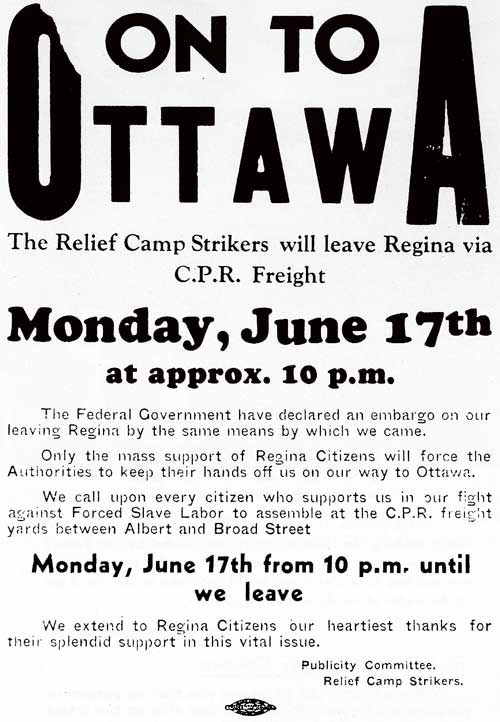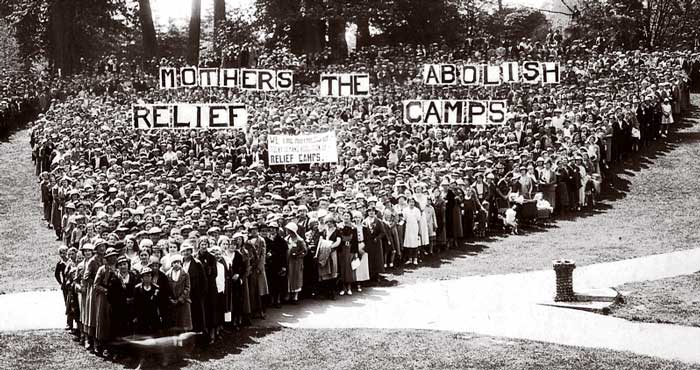About Us
This Month in
Labour History
July 1, 1935 – On-To-Ottawa Trek protested unemployment
The struggle for income security and unemployment insurance has been a struggle fought by the union movement for generations and is now recognized as fundamental part of Canada’s social fabric. But did you know that the roots of this social structure came from a grass-roots workers movement of men and women in the 1930s?
“The Great Depression” had crippled the Canadian economy leaving one in nine citizens without work. In order to deal with this massive numbers of unemployment men the Federal Government created “relief camps” where thousands lived and worked at a rate of twenty cents per day. These camps were far from cities and offered the most basic standards of living.
Frustrated with the conditions and lack of government concern, workers in the BC camps Formed a union called the “Relief Camp Workers Union” an headed to Vancouver. In April 1935, after a two-month protest, over a thousand unemployed workers climbed onto the top of railway box cars in what became to be known as the “On-to-Ottawa Trek.” Their goal was to meet as a group with the government to demand better conditions and a more just system to address unemployment.
By the time they got to Regina the government of R.B. Bennett agreed to meet with a handful of their representatives. While the delegation traveled to Ottawa the bulk of the trekkers were held in Regina. On July 1st, the report from the meetings was that the government had nothing to offer that would relieve the distress of the unemployed. Nearly 2,000 people joined the remaining 300 trekkers in a show of protest and solidarity before the trek would be ended. The police under the direction of the federal government charged the peaceful crowd to arrest the leaders. This set off hours of hand-to-hand fighting throughout the city. The police fired revolvers above, and into the crowd. They used tear gas while people tried to flee or fought back using only sticks and stones.
Damage to property was considerable and personal injuries were many; one trekker and a plainclothes policeman died. The hospital was treating hundreds of injured residents and trekkers. Some were taken into private homes where they were safer because police arrested those in hospital. Police claimed 39 injuries in addition to the dead police officer but denied that any protesters had been killed in the melee; the hospital records were altered to conceal the actual cause of his death.
The country was shocked by the actions of the government and the police. Pressure was becoming greater calling for real relief. Facing an election the government announced an Employment and Social Insurance Act. The courts would rule the law unconstitutional, and it would take until 1940 to finally be established as a national program of unemployment insurance.
Video – on the Regina Riot
- https://www.youtube.com/watch?v=F0tW2kvy1z8
- http://www.thecanadianencyclopedia.ca/en/article/on-to-ottawa-trek/
- http://encyclopediecanadienne.ca/fr/article/marche-sur-ottawa/
- https://congresdutravail.ca/adoption-de-la-loi-sur-lassuance-chomage/



